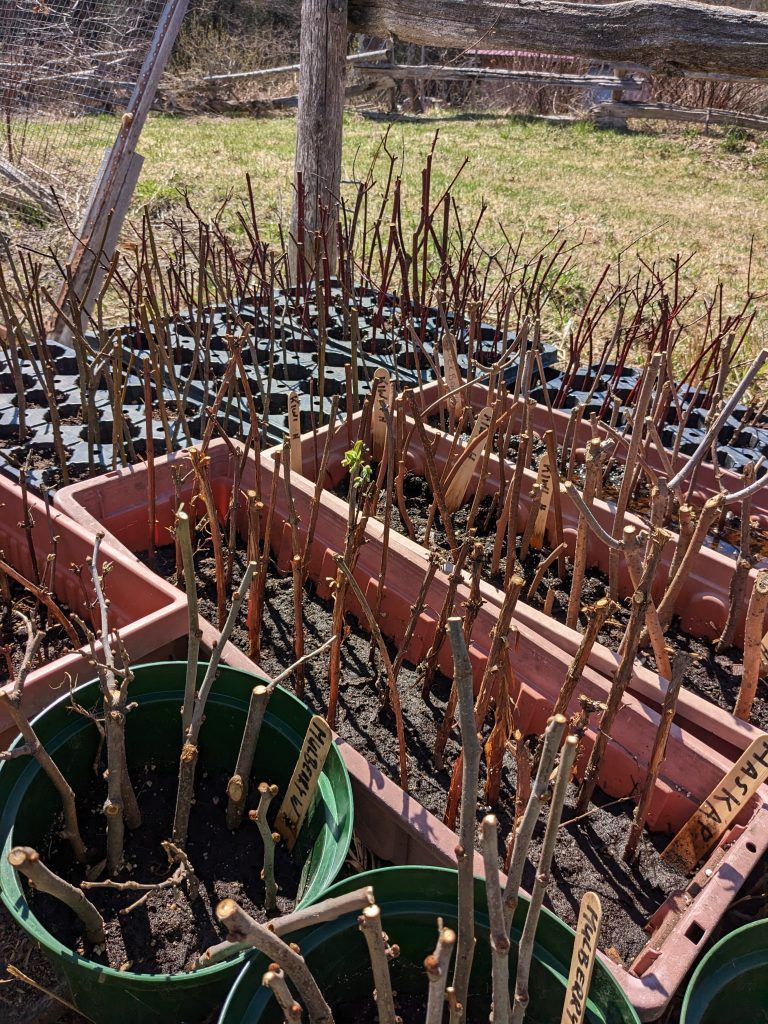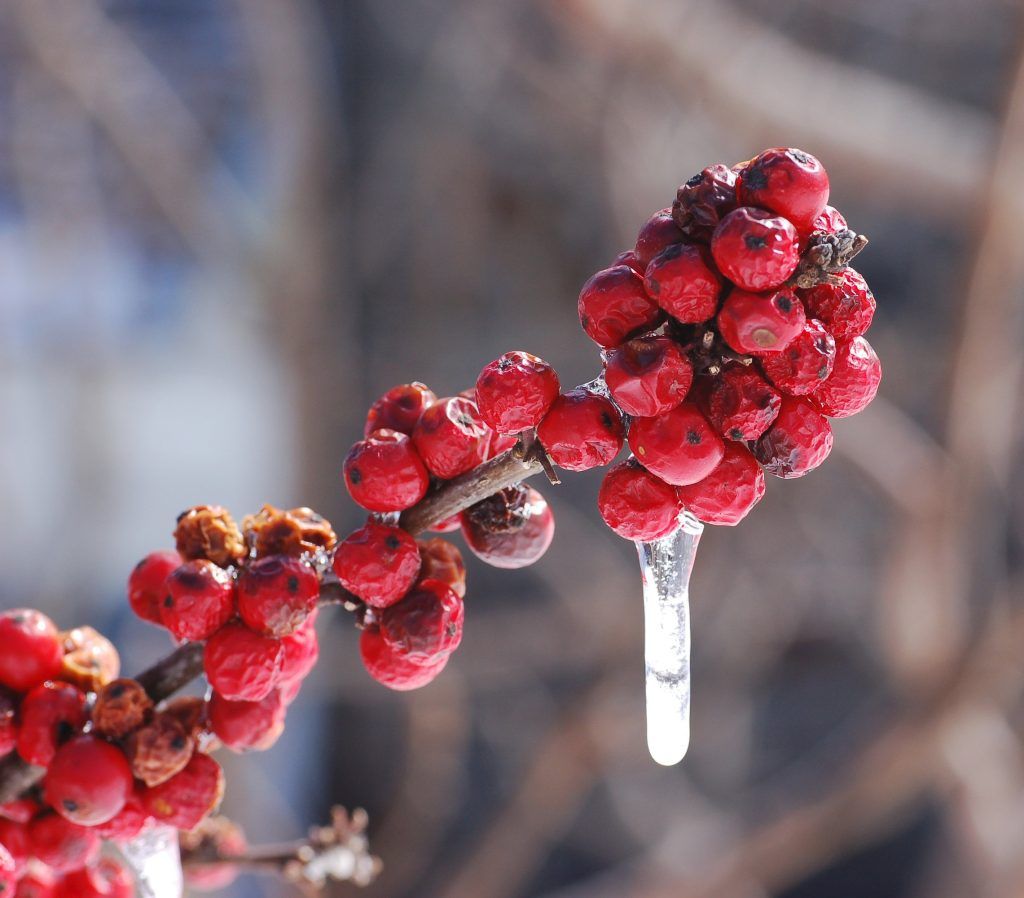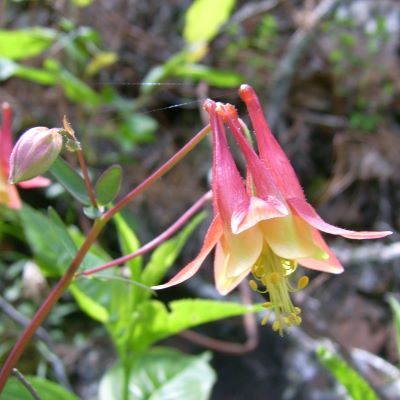by Thorsten Arnold
Rising demand for native plants
 Native plants are increasingly popular with Ontario’s garden owners. Toronto had adopted a pollinator protection strategy in 2018. Since then, pollinator garden initiatives are cropping up everywhere, promoting native plants. Toronto’s association of urban growers, the master gardeners, beekeepers, Ontario Nature, and even some companies like Elm Landscaping educate how native plants provide habitats for our declining insects and birds. In (sub)urban settings, lawns are identified as best opportunity to create habitat. Cities are starting to revise their bylaws, to simplify public action on biodiversity (e.g. Toronto, Sudbury, Kingston, Bellville, Thunder Bay, and soon Collingwood). Other municipalities are lagging behind, still fining citizens who want to take action to regenerate Earth. But organizations are now targeting these laggard bylaws with education for local action. Community initiatives are popping up everywhere: The Pollinator Pathway project coordinates plantings for a migratory route across North America. David Suzuki Foundation’s Butterfly Project offers an interactive map of participants. Local initiatives build community, and others like the Corner Pollinator Garden website or the Hamilton Plant Paradise leave no question unanswered …
Native plants are increasingly popular with Ontario’s garden owners. Toronto had adopted a pollinator protection strategy in 2018. Since then, pollinator garden initiatives are cropping up everywhere, promoting native plants. Toronto’s association of urban growers, the master gardeners, beekeepers, Ontario Nature, and even some companies like Elm Landscaping educate how native plants provide habitats for our declining insects and birds. In (sub)urban settings, lawns are identified as best opportunity to create habitat. Cities are starting to revise their bylaws, to simplify public action on biodiversity (e.g. Toronto, Sudbury, Kingston, Bellville, Thunder Bay, and soon Collingwood). Other municipalities are lagging behind, still fining citizens who want to take action to regenerate Earth. But organizations are now targeting these laggard bylaws with education for local action. Community initiatives are popping up everywhere: The Pollinator Pathway project coordinates plantings for a migratory route across North America. David Suzuki Foundation’s Butterfly Project offers an interactive map of participants. Local initiatives build community, and others like the Corner Pollinator Garden website or the Hamilton Plant Paradise leave no question unanswered …
Other factors contribute to the rise in demand. Ash trees – a once popular tree for cities and windrows – are dying and require large replanting. More farmers are also trying out silvopasture, creating a new market for fodder trees. And Ontario is currently experiencing a new driver of growth: regulation. Toronto has gone one step further, and adopted a new Green Standard that came into force in May 2022. This Green Standard sets strict rules for sustainability on sites near ravines. In addition to constructing a green roof, developers on such sites must plant the landscaped area with 100 per cent native plants. At least half of those must come from a regionally appropriate seed source!
Across North America, businesses are paying attention to this growth in demand for native plants. The US-based journal Growing For Markets just ran a very informative three-part series on native plant growing that portray business management, plant propagation, and commercial equipment setup. Ontario’s Rural Voice ran several portraits of local nurseries.
Supply shortages of native plants and native seeds
With such increase in interest and grow in market demand, one key barrier to landscape change becomes apparent: supply of native plants. Native plant nurseries across the Province are selling out as early as February – if you have not ordered your supply by now, it may be impossible to find native plants or seeds. And without plants or seeds, any ambition to re-naturalize our gardens and other land remain theoretic. In fact, landscapers across the GTA are now questioning whether the Green Standard is realistic – they simply cannot source appropriate plant materials. According to Heather Schibbli, coordinator of the Network for Nature, larger restoration projects need to wait for several years until plant supply is available – a single restoration project can easily empty the entire plant supply in Ontario. So suppliers are unable to meet the eagerness of our citizen activists, and much less so if cities like Toronto prescribe native plantings.
Carolinian Canada (CC) is currently consulting with stakeholders around how to increase the supply of native plants, and in particular how to create a solid supply with seeds. CC has been consulting with diverse stakeholders, including forestry, nurseries, policy makers, and activists. Results from this ongoing consultation will be published in the Southern Ontario Seed Strategy. CC focuses on three broader topics: (1) focal species, including species at risk and invasives; (2) the native plant economy; and (3) ethical issues including indigenous reconciliation, safe spaces. The strategy will be finalized in Early 2024, and EFAO will run a Newsletter article about local economics this summer. To stay on top, readers may sign up with CC’s newsletter for regular updates.
Economic barriers
In economic terms, this is an opportunity for local businesses. In a perfect market, a supply shortage would quickly lead to a price hike for the scarce products, and soon the market would grow sufficient supply. This does not seem to work with native plant supply – at least not until now. The reasons for this are complex and manifold. One aspect is that many people are not willing to pay as much for native plants as for foreign cultivars. Economists call this “high price elasticity of demand”. Other barriers are more related to the growing itself:
- Access to native plant seeds. Seeds are hard to come by, especially if genetic material must be sourced from specific regions and meet other requirements. And seed collection is tricky: collectors need to follow certain rules, use large stands, timing is critical, and profits are low.
- Massive knowledge requirements. Each plant needs different treatment of seeds, different soil and moisture conditions. And significant knowledge gaps remain about how best to grow native plants – it simply was never a priority of research, and nurseries rely on a thin literature, mentorship networks and trial-and-error.
- Greenhouse infrastructure and profitability. Growing native plant gives moderate profit but requires significant investment into infrastructure and skills. A handful of larger nurseries grow plants on tens of acres, and supply most of Ontario. Micro nurseries earn more with workshops or design consulting. New entrants face several barriers: land ownership, access to effective labour, and upfront investment into greenhouse infrastructure.
- Erosion of genetics. Larger farms use modern technology on their fields. Food crops have been bred for this technology: plants drop seeds consistently and easily. Whereas native plants are not that consistent, they don’t let go of their seeds with regular machinery. So large nurseries grow nativars – a term describing cultivars from a native species. Like with all cultivars, human selection has diminished genetic diversity in favour of specific desirable traits. Often, breeding for commercial growing created consistent seeding dates, larger petals or different petal colors, easier seed threshing, or different soil requirements. Whether nativars are tolerable or not depends on the breeding process, which unfortunately is intransparent to the buyer. Conservation organizations mostly are warning against the use of nativars.
- Subsidies make growing some native trees infeasible. Many countries subsidize tree growing by a few large nurseries. For example, Ontario’s 500 Million Trees program helps growers to provide trees at very low cost – two-year old saplings only cost between $1.50 and $2.25. While we are fully supportive of these subsidy programs to increase the supply of affordable seedlings, local growers have a hard time competing with these subsidized plants. Most local tree nurseries thus avoid growing these species.
 Economic opportunities
Economic opportunities
Together, these issues form systemic barriers to increasing native plant supply – even though the resources to overcome all of these barriers are available across our region, yet dispersed and uncoordinated:
- Plant production requires nurseries with potting and greenhouse infrastructure, plant knowledge, and market access. To sell plants, markets either use retailing or larger wholesaling contracts, e.g. for restoration projects. Partnerships with landscapers also exist, but require attention to timing – urban customers often have expectations that are out of sync with the natural cycles. Some farmers grow out plants for nurseries, and these nurseries manage both retail and wholesale markets.
- Seed collection cannot be centralized in the hands of few, for several reasons. Like seed saving for crops, native seed collection should rather build on diversified, localized networks. Seed collection requires much attention to detail, access to a strong stand of native plants, monitoring, and knowledge. Historically, farmers saved seeds in vibrant open networks. Farmers came together to share seed cleaning equipment, storage space, and knowledge. They traded seeds with traits that are desirable in their specific ecological context within their communities: their peers served as an insurance to minimize risk of loss. Seed saving has always been a community effort – and native plants are no different here.
- Marketing venues for plants range from direct-to-consumer retail sales, over contract growing for larger restoration projects, to growing for landscaping businesses. Established native plant nurseries already have ample knowledge and experience with these markets, yet often lack growing capacity to meet demand.
Piloting a localized native plant value chain
 Based on these lessons, Regenerate Grey Bruce is attempting to build a partnership for localized production and marketing of native plants. RGB’s strategy has four main components: coordination, volunteer seed collectors, commercial growers of plants with existing greenhouse infrastructure, and native plant nurseries as knowledge holders, consultants, and marketers. The partnership would fulfill the following roles (see also Graph 1):
Based on these lessons, Regenerate Grey Bruce is attempting to build a partnership for localized production and marketing of native plants. RGB’s strategy has four main components: coordination, volunteer seed collectors, commercial growers of plants with existing greenhouse infrastructure, and native plant nurseries as knowledge holders, consultants, and marketers. The partnership would fulfill the following roles (see also Graph 1):
- Coordination of seed collection (centralized), in consultation with native plant nurseries as knowledge holders. Also training of seed collectors.
- Seed collection with local volunteers with passion for conservation (decentralized);
- Seed processing and storage (centralized),
- Coordination of native plant growing and seed distribution (centralized), in consultation with native plant nurseries and landscapers as knowledge holders. Also training of growers.
- Growing of native plants (decentralized), in partnership with small local farmers. Many local farmers already have the infrastructure required to grow native plants, general growing skills, a passion for ecosystems, and often a desire to diversify their enterprises.
- Sales of native plants (decentralized), in partnership with local native plant nurseries, to individuals or landscaping businesses.
Together, this network is addressing all barriers listed to native plant growing, except for the competition with some subsidized tree saplings. The 2023 year will serve as a pilot for building such a network:
- Volunteer stepped forward as seed collectors. These participate in training with the Forest Gene Conservation Association (FGCA), who is certifying seed collectors in an annual workshop series. Participants can either take the introductory course or the full certification course that includes in-field training.
- RGB has consulted with native plant nurseries and identified a few species that they desire to sell more, but cannot produce themselves.
- RGB has also sourced seeds for some of these plants, through commercial venues. These seeds will be available to local farmers who are interested in growing out native plants.
- RGB is organizing a workshop with experienced native plant grower Kimberley Fellows from Hawthorn Farm. Kim has grown native plants for almost two decades, and is now a leading activist in growing open-pollinated vegetable seeds as well.
- RGB has also identified seed growers, who would be available to process and store seeds.
If you are interested in participating as a seed collection volunteer, please reach out to regenerategreybruce@gmail.com, with a subject line “Seed collection volunteer”.
Looking for volunteer farmers
 We are also looking for farmers interested in growing native plants. In the pilot season, we recommend only dipping the toes into the new enterprise and keeping things small – maybe 200 row feet each of 2-3 plants. Native plants are usually perennials, which requires more than one year of growing.
We are also looking for farmers interested in growing native plants. In the pilot season, we recommend only dipping the toes into the new enterprise and keeping things small – maybe 200 row feet each of 2-3 plants. Native plants are usually perennials, which requires more than one year of growing.
Farmers need to consider many questions – what plants are suitable to grow in their specific conditions (soil, moisture, shade), how to source seeds (until we have a local network of collectors), how to start seedlings, and how to harvest the grown plants. Native plants could become a lucrative business for vegetable gardeners, farmers with greenhouses, and others interested in this new business venture. A larger study by Carolinian Canada will provide more detailed economic insights; this pilot gives you a first experience in this expanding market.
To help farmers with knowledge transfer, RGB will organize a workshop on Saturday, April 29 at Luna Mia farm in Desboro. The workshop will be led by Kim Delaney from Hawthorn Farms. Learn more about this workshop on this EFAO-listed event.
Regenerate Grey Bruce staff is excited about this emerging opportunity. If you want to participate or learn more, please reach out to regenerategreybruce@gmail.com and describe your interest, your experience, and your aspirations. We are also happy to talk about landscape narrative, the role of vegetation to cool local climate, and native plant value chains. We feel we are just at the beginning of a much larger journey.
About Regenerate Grey Bruce
In 2022/2023, the project Regenerate Grey Bruce is building a network of practitioners in landscape regeneration in our region. A new landscape narrative will require a collective effort of our community to change our relationship with the land, the way that we relate to the land’s ecological functioning, and how we value the land and the creatures that inhabit it. We can only do this together as a community. Our Theory of Change focuses on action, because our target audience already is relatively well educated about the planetary crisis in general, but lacks the impetus to translate knowledge into behavioural change. Through community dialogue, RGB identified a set of values that bring our community together around landscapes. We are engaging with youth and establish a Tiny Forest and bioswale at a local school. We are developing an online platform to host workbees – an immersive way to build knowledge, get work done, and connect with likeminded community. And we also identified barriers to regeneration. One of the most blatant barriers is indeed access to native plants, the main topic of this blog.
Regenerate Grey Bruce (RGB) is hosted by The Sustainability Project, a not-for-profit that “brings together community members dedicated to creating a culture of sustainability, who reside in this region, the Traditional Territory of the Saugeen Ojibway Nation. RGB is financially supported by the Greenbelt Foundation.

